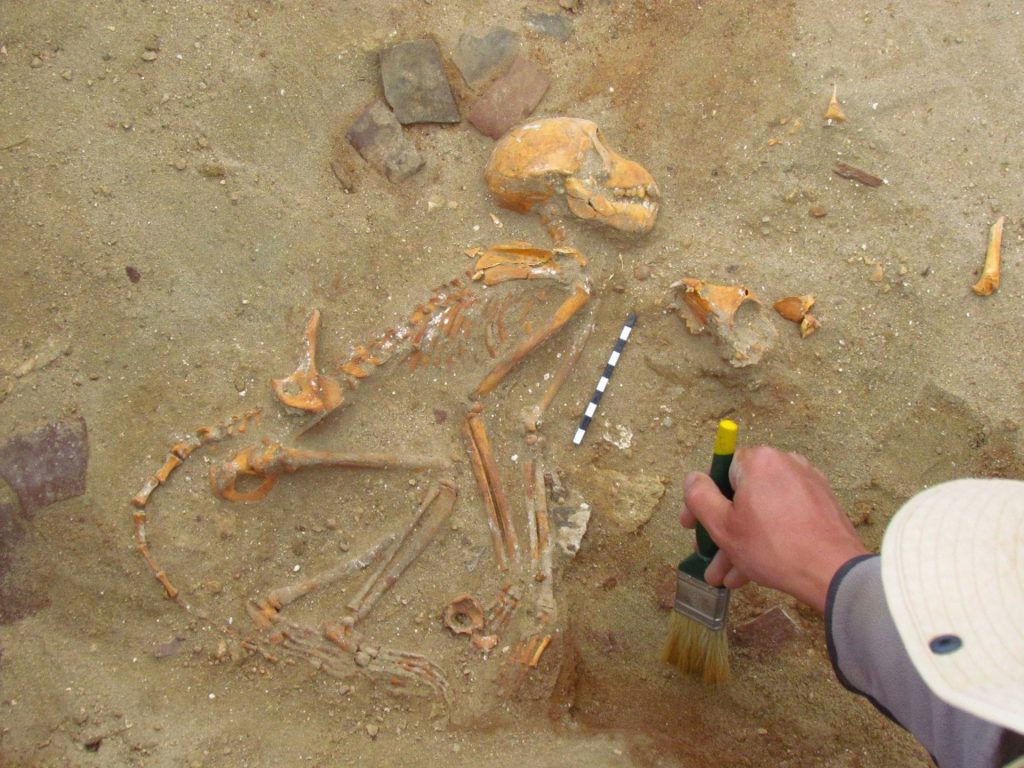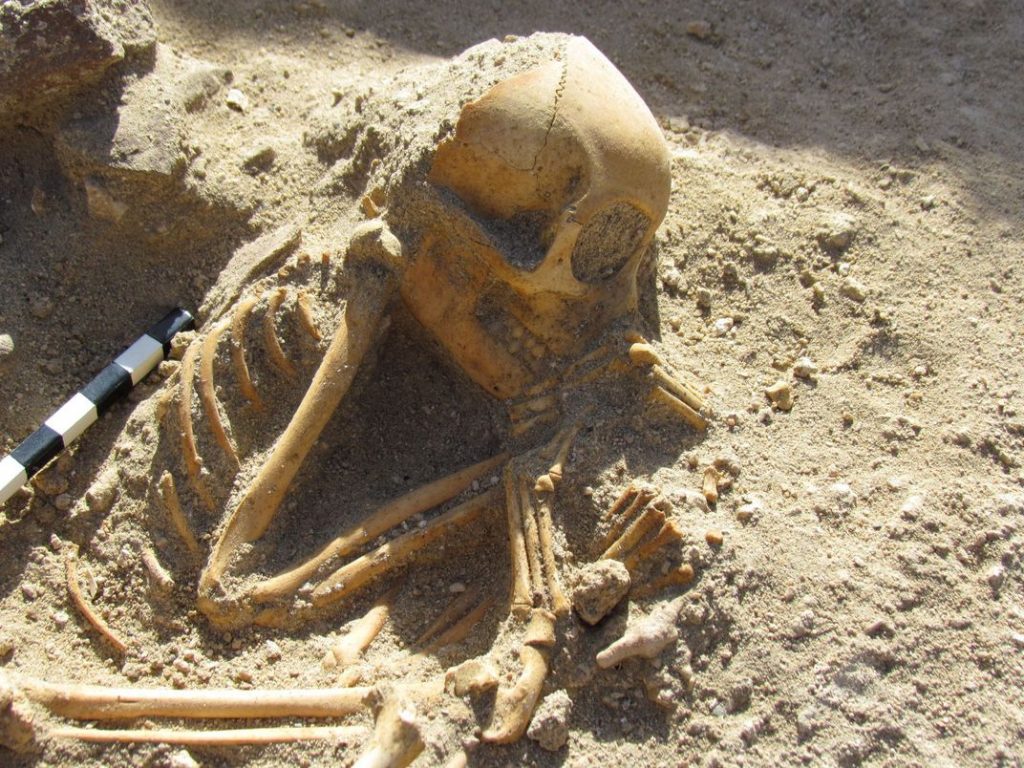Ancient Animal Burials in Egypt Were Monkeys Imported as Pets from India

Ancient Animal Burials in Egypt Were Monkeys Imported as Pets from India
Monkeys from an ancient Egyptian pet cemetery were traced back to India. The compassionate burials in which the monks were placed in the fetal position and were surrounded by grave goods show that the primates were kept as pets in a unique archaeological discovery.
Archaeologists from the Center of Mediterranean Archeology of the University of Warsaw’s together with researchers from Delaware university in the United States., find the monkeys buried at a pet cemetery in the ancient port of Berenice.
Since 2008 the team works on this site, uncovering remains of monumental fortifications, defensive walls, towers, a large underground complex, a temple and the pet cemetery.
The archaeologists initially assumed that the monkeys were local, belonging to the guenon family of African monkeys.

After analysing 3D scans of the specimens and performing a comparative analysis of monkey bones, however, the researchers pinned the remains to two different monkey species, rhesus macaques and the slightly smaller bonnet macaques, both of which hail from India. Berenice is located on the western shores of the Red Sea and 340 km due east of Aswan.
The careful burials, in which the monkeys were laid down in a sleeping or fetal-like position, plus the presence of various grave goods, suggests the monkeys were cared for and kept as pets prior to their deaths.
The discovery of rhesus and bonnet macaques in Egypt “was a big surprise to us,” Marta Osypińska, a team member and an archaeologist from the Polish Academy of Sciences, explained in an email. “We didn’t expect them here,” as ancient written sources failed to mentioned this practice.
Work at the Berenice pet cemetery from 2016 to 2020 has resulted in the discovery of 16 monkeys, 536 cats, 32 dogs and one falcon, said Osypińska. A paper describing the health and condition of these animals has been submitted to the science journal World Archaeology, she said.
Researchers from the Institute of Archaeology and Ethnology of the Polish Academy of Sciences contributed to this research, according to Science in Poland, a publication of the country’s Ministry of Science and Higher Education.

One monkey was found wrapped in a woolen blanket, while another had large sea shells placed next to its head, reports First News. Fragments of broken amphora — an ornate vase — were also found next to the buried remains.
During the 1st century CE, the Roman Empire annexed Egypt, turning Berenice into a vibrant trade hub. Romans stationed at this outpost sought various companion animals, which were imported from abroad, the researchers speculate. It’s possible that both Romans and Egyptians engaged in this practice.
“Berenice was a de facto Roman port, although formally in Egypt,” explained Osypińska, adding that Berenice was “a very important port through which valuable goods from Asia, Africa and the Middle East were brought to the Empire.”
As living trade items, these monkeys would have required considerable care and attention, needing food and water during their voyage across the Indian Ocean and Red Sea.
But as Osypińska explained, the monkeys were unable to adapt to their new Egyptian environment, and all died young.
“We don’t know why. Perhaps it was a bad diet, perhaps diseases, or perhaps an inability to take care of them,” she said. “Some were ‘babies,’ meaning that they must have been born on the road or in Berenice.”
Osypińska said fresh water had to be brought to Berenice on donkeys from the nearby mountains, and that “everything” had to be imported from a distance.
Importantly, no physical injuries were seen on the monkey skeletons, unlike the many injuries seen on the buried cats and dogs.
Exotic pets were common in both antiquity and prehistoric times. Other examples include a 1,000-year-old cat kept by nomadic herders in what is now Kazakhstan and chickens and hares brought into Britain some 2,300 to 2,200 years ago, which were revered rather than eaten.